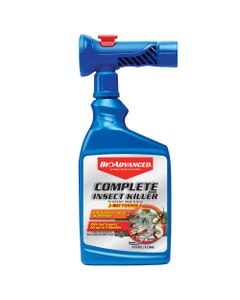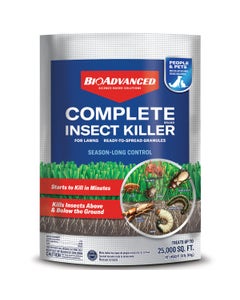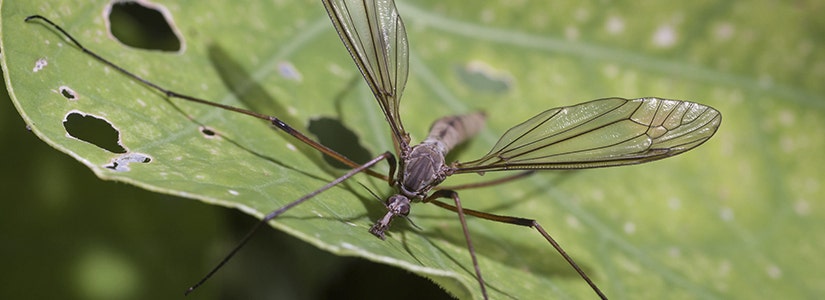

- Home
- Solution Center
- Learn
- Outdoor Pests
- Controlling Fleas And Ticks
Controlling Fleas And Ticks
Controlling Fleas and Ticks
Blood-sucking Fleas and Ticks pose potential harm to your family and pets. Fleas live in moist, shady areas, including lawn thatch, mulch, leaf litter, woodpiles, crawl spaces and beneath porches or decks. Ticks prefer leaf piles or litter, mulch piles, plant shoots, woodpiles, shrubs and weedy areas. Both of these insects can cause skin irritation and more complicated health problems. Fleas can carry Tapeworms and organisms that cause Bubonic Plague and Murine Typhus. Ticks can carry disease organisms, such as Lyme Disease, Rocky Mountain Spotted Fever, Anaplasmosis or Ehrlichiosis. Control them in your lawn with these simple tips.
Lawns
Mow It Right. Mowing your lawn to the proper height reduces pest hang-outs. Both of these insects hide in longer grass. Not mowing grass too short also helps attract Spiders and Ants, two major Flea predators.
Avoid Overwatering. They prefer moist environments. An overwatered or poorly-draining lawn can extend an invitation to these insects. Ensure you're watering your lawn properly. If you have a drainage issue, aerating may help. For moist, shady areas on your property, follow the tips below to limit their attraction.
The Rest Of The Yard
Keep It Clean. Neatness counts when it comes to eliminating habitats for Fleas and Ticks to hide and lay eggs. Remove yard debris, such as piles of lumber, bricks and stones. Pick up discarded pots and other garden items; stack them neatly to limit refuge. At the end of the growing season, take time to clean up your garden, yard and storage areas under a deck or in a crawl space.
Check Pet Hang-Outs. Flea and Tick larvae remain within 50 feet of your pet's favorite resting areas. Clean and treat around any cool, shady spots your pet favors, such as spaces under decks or porches, beneath low-hanging shrubs or along fence lines. Don't forget to treat dog runs or kennels.
Limit Wildlife. Urban wildlife carry both. This includes squirrels, deer, rabbits, raccoons, mice and feral cats. If it's warm-blooded, it's probably ferrying a few blood-sucking insects. If critters visit regularly, consider ways to reduce your yard's appeal. Some animals seek out trash; skunks may be prowling for Grubs in the lawn. Squirrels may be drawn by birdseed; mice may be feasting on berries on shrubs. Never allow wildlife to set up under sheds or decks on your property.
Protect Your Home. Establish a barrier around your home with a pesticide perimeter treatment. This treatment can prevent pests from migrating into your home, although they can still hitch a ride on you or your pet. Remove brush, plants and leaf litter around your home, aiming for at least a 6-inch-wide clean area. This eliminates their hiding places.
Create A No-Migrate Zone. If your area is known for Ticks, establish a barrier between your lawn and surrounding woods or properties. Remove weeds, brush and leaf litter.
Consider Cedar. Cedar mulch repels Fleas and Ticks. Use it to border areas where your pet likes to play or rest to keep insects from migrating into those areas. Place cedar mulch along the edges of your yard to form a barrier.
Welcome Predators. Make your landscape appealing to Flea and Tick predators by keeping grass mowed to the right height and incorporating native plants and ground covers. Birds eat these insects, but if you're hanging bird feeders, balance the benefit of attracting birds against the risk of luring squirrels or other Flea- and Tick-carrying rodents that feast on spilled seed.
Let The Sun Shine. Both Ticks and Fleas like shady, moist areas. Prune trees and shrubs to allow more sunlight to enter your landscape.
Lastly, Protect You And Yours
Apply an insect repellant with DEET to clothes and exposed skin. Wear light-colored clothes so Ticks are easy to spot. Tuck shirts into pants and pants into socks to keep Ticks outside clothing. If you have been in a Tick-infested area, check for Ticks, especially in skin folds (beneath arms, behind ears, groin area, etc.) Wash clothing in hot water and dry for an hour in high heat to kill Ticks that may be hiding in seams. Don’t forget to treat pets and check them frequently, especially after they’ve been outdoors in insect-friendly areas.
Fall – The Season To Step Up Your Game
While many folks don't associate autumn chill with pests, fall can be one of the worst seasons for these bloodsuckers. The best way to determine if Fleas and Ticks are an active autumn threat in your region is to check with your local veterinarian or local Cooperative Extension System office.














